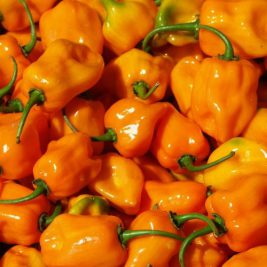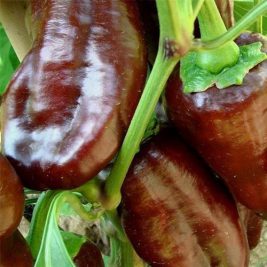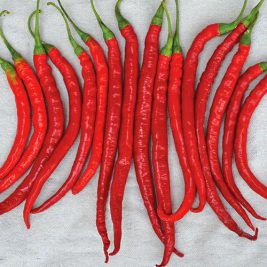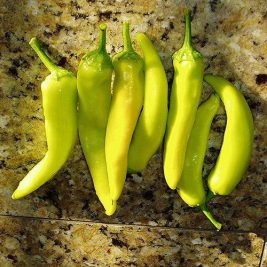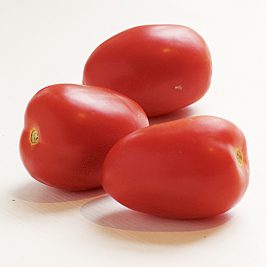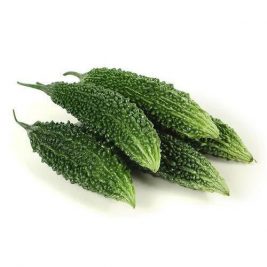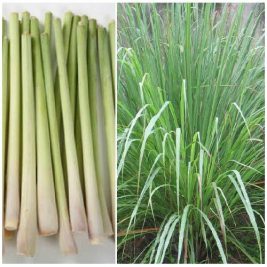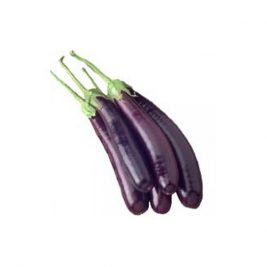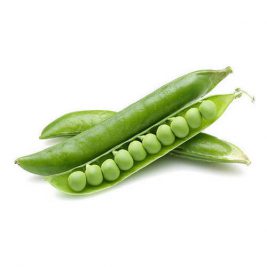Vegetable Seeds
-
₨120
The habanero is a hot variety of chili pepper. Unripe habaneros are green, and they color as they mature. The most common color variants are orange and red, but the fruit may also be white, brown, yellow, green, or purple. Typically, a ripe habanero is 2–6 cm long
-
₨120
Capsicum annuum is a species of the plant genus Capsicum native to southern North America and northern South America. This species is the most common and extensively cultivated of the five domesticated capsicums.
-
₨120
The cayenne pepper is a type of Capsicum annuum. It is usually a moderately hot chili pepper used to flavor dishes
-
₨120
This pepper is usually harvested before maturity when still yellow. It measures between 4″-6″ inches in length (10-15cm) which tapers to a rounded point. Upon maturity, the pepper becomes orange then red in color.
-
-
₨110
Momordica charantia is a tropical and subtropical vine of the family Cucurbitaceae, widely grown in Asia, Africa, and the Caribbean for its edible fruit. Its many varieties differ substantially in the shape and bitterness of the fruit.
-
₨100
Cymbopogon, better known as lemongrass, is a genus of Asian, African, Australian, and tropical island plants in the grass family. Some species are commonly cultivated as culinary and medicinal herbs because of their scent, resembling that of lemons
-
₨100
Eggplant, aubergine, or brinjal is a plant species in the nightshade family Solanaceae, Solanum melongena, grown for its often purple edible fruit
-
₨75
The pea is most commonly the small spherical seed or the seed-pod of the pod fruit Pisum sativum. Each pod contains several peas, which can be green or yellow. Pea pods are botanically fruit, since they contain seeds and develop from the ovary of a flower.
-
₨60
Cauliflower is one of several vegetables in the species Brassica oleracea in the genus Brassica, which is in the family Brassicaceae. It is an annual plant that reproduces by seed. Typically, only the head is eaten – the edible white flesh sometimes called “curd”
-
Contact UsYou may connect with Team Greene at 0330-3450001
-
After SalesEven after Sales, Greene is there for you !!!
-
Return PolicyIf Product has a fault, Greene Returns *(T&C)

